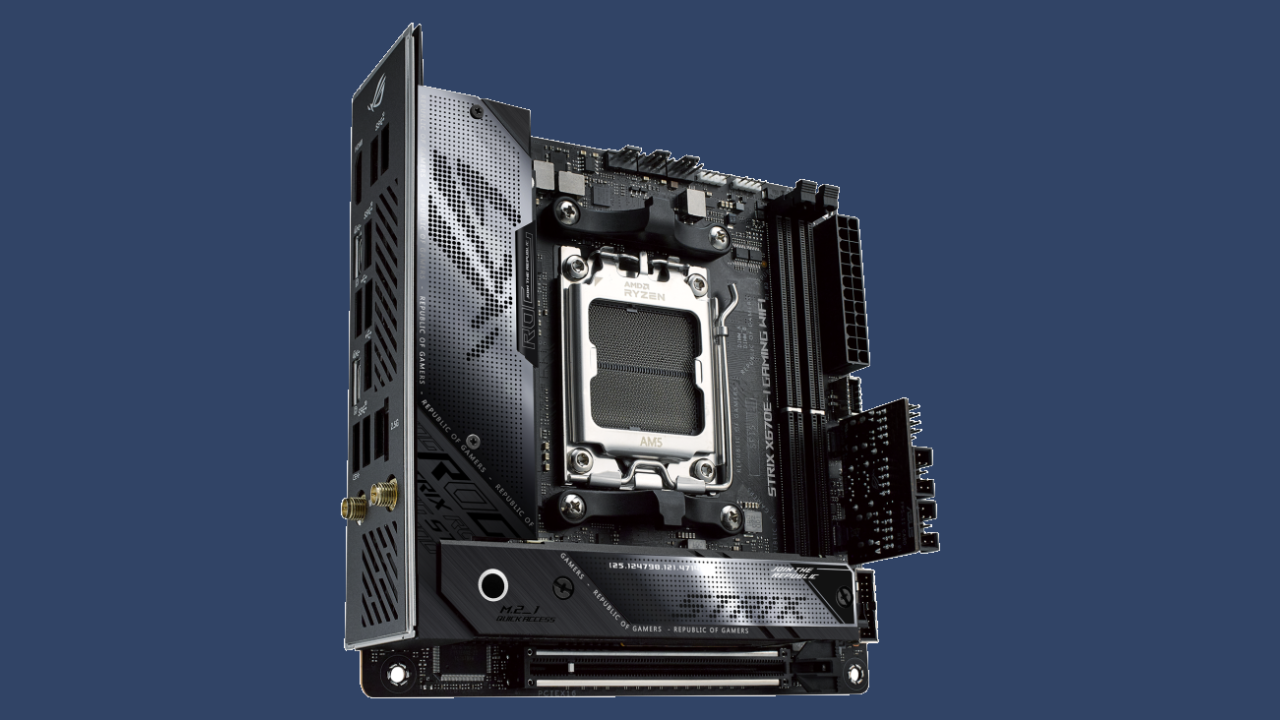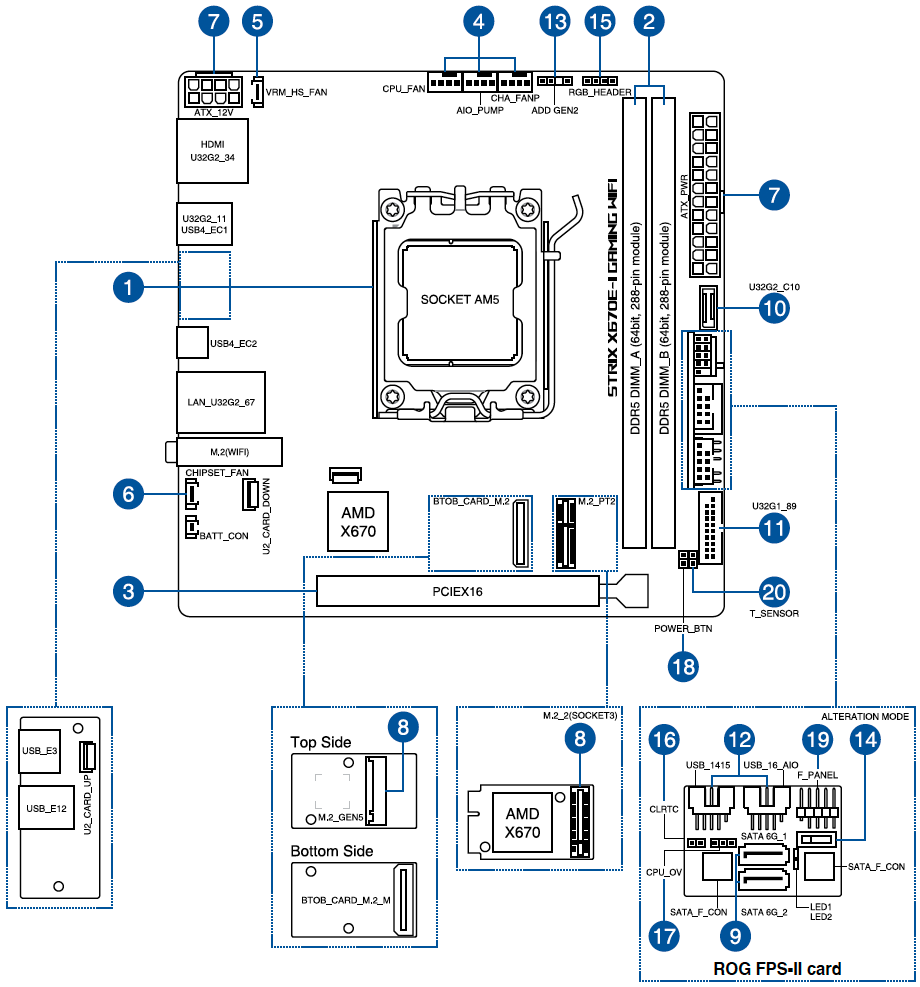Puny Asus Mini-ITX motherboard has a chipset on a stick
A clever solution to squeezing AMD's dual-chip X670 chipset onto a teensy motherboard.

Remember that characteristically quirky Asrock motherboard that transmogrified from an AMD B650 board into an X670? Well, Asus has got something similar going on with its new ROG X670E-I board. It has a chipset on a PCIe stick.
How so? Well, this all hinges on the fact that AMD's B650 chipset uses a single chip, known as Promontory 21, whereas the premium X670 chipset houses two Promontory 21 chips daisy-chained together.
It's basically a more cost effective way of adding features and connectivity compared with taping out two different chips or going with a single larger chip and switching off various features for the lower-end implementation.
Anywho, whereas the Asrock board was all about quirky for the sake of quirky, the Asus item is a function of more practical concerns. The Asus ROG X670E-I is one of those puny Mini-ITX models which poses a challenge for laying out a dual-chip chipset.
So, as Tom's Hardware explains, Asus has whacked the second Promontory 21 chip on a PCIe 4.0 x4 add-on card. The net result is an extra two USB 4 Type-C ports with a 40 Gbps throughput as well as DisplayPort support, a Wi-Fi 6E + Bluetooth 5.2 adapter, a 2.5GbE controller, and multiple further USB ports.
The Asus ROG Strix X670E-I board also sports two M.2 slots, one in PCIe 5 spec the other PCIe 4, a couple of SATA ports (via another included add-on card), two further USB4 Type-C connectors, one USB 3.2 Gen2 Type-C port, six USB 3.2 Gen 1 Type-C connectors, and five USB 2.0 ports.

Plus you get 2.5GbE and high quality audio courtesy of the Realtek ALC4050 codec and ESS Sabre 9260Q DAC.
The biggest gaming news, reviews and hardware deals
Keep up to date with the most important stories and the best deals, as picked by the PC Gamer team.
Broadly speaking, these add-in chipset cards require specific UEFI support. So, you can't just whack them into any AMD AM5 motherboard that already has a Promontory 21 chip and expect anything good to happen.
But as these modular motherboards emerge it at least seems like AMD's dual-chip approach is giving motherboard makers plenty of options.
Best CPU for gaming: Top chips from Intel and AMD
Best gaming motherboard: The right boards
Best graphics card: Your perfect pixel-pusher awaits Best SSD for gaming: Get into the game first

Jeremy has been writing about technology and PCs since the 90nm Netburst era (Google it!) and enjoys nothing more than a serious dissertation on the finer points of monitor input lag and overshoot followed by a forensic examination of advanced lithography. Or maybe he just likes machines that go “ping!” He also has a thing for tennis and cars.


